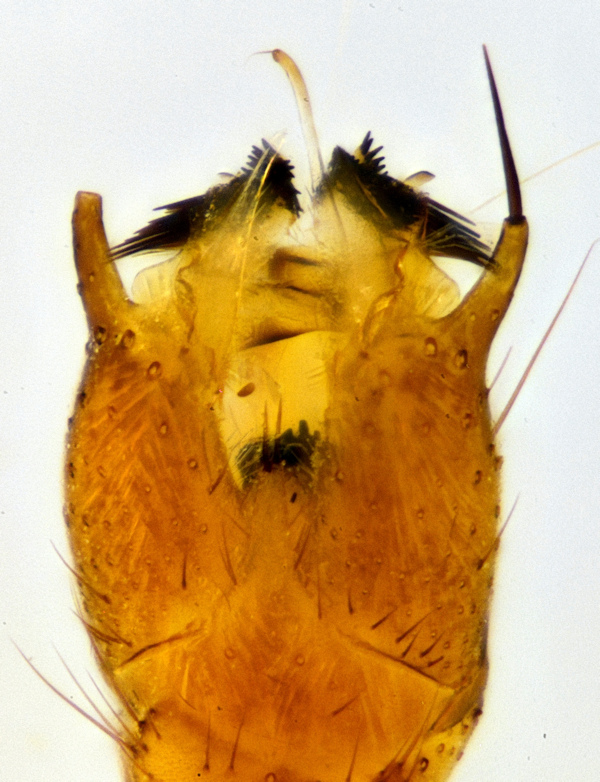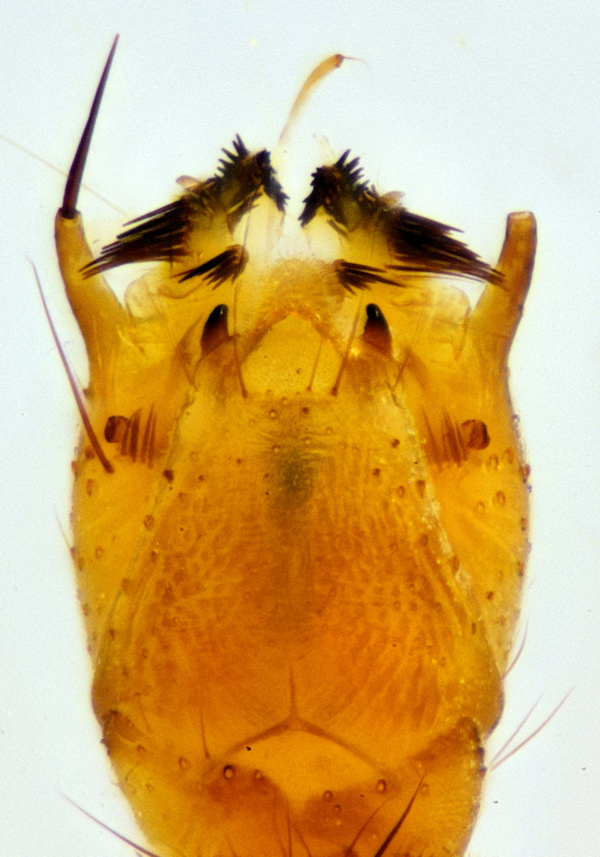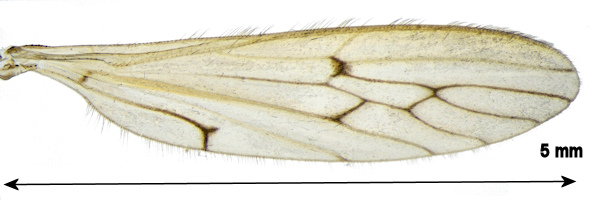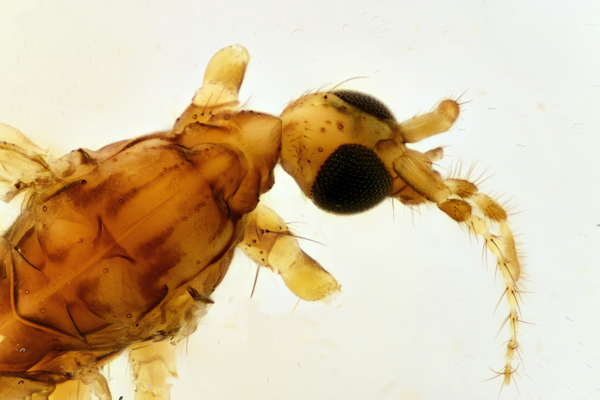Diptera.info :: Identification queries :: Diptera (adults)
|
Styringomyia Cameroon => S.occidentalis
|
|
| evi |
Posted on 06-03-2018 11:53
|
|
Member Location: Espoo Finland Posts: 233 Joined: 20.03.11 |
Styringomyia Cameroon 1.4.-31.5.2010. Does someone know the species ? BR Esko evi attached the following image:  [262.68Kb] Edited by evi on 07-03-2018 11:56 |
| evi |
Posted on 06-03-2018 11:54
|
|
Member Location: Espoo Finland Posts: 233 Joined: 20.03.11 |
Ventral
evi attached the following image:  [273.97Kb] |
| evi |
Posted on 06-03-2018 11:54
|
|
Member Location: Espoo Finland Posts: 233 Joined: 20.03.11 |
Wing
evi attached the following image:  [70.73Kb] |
| Dmitry Gavryushin |
Posted on 07-03-2018 08:56
|
|
Member Location: Moscow region, Russia Posts: 3338 Joined: 17.10.05 |
Of paler yellow species with distinctly spotted wings, anterior half of mesonotum (presumably) pale and apex of tergite 9 trilobed, this one runs pretty well to Styringomyia occidentalis Edwards, 1924 (basal tubercle of gonocoxite with stout, spinelike terminal bristle). I've seen Styringomyia annulipes (Enderlein, 1912) which is quite similar yet with basal tubercle of gonocoxite short and terminal bristle very slender; occidentalis was originally described as a form of wide-spread annulipes. Unfortunately, male hypopygium of occidentalis never has been illustrated (only female terminalia in Podenas, 2012). Styringomyia liberiensis Alexander, 1930 which also belongs here is maybe another option.
Edited by Dmitry Gavryushin on 07-03-2018 08:56 While others can't climb, using infinite pains, I, gravity turning to jest, Ascend, with all ease, perpendicular planes, Rough or smooth, just as pleases me best. |
|
|
|
| evi |
Posted on 07-03-2018 11:57
|
|
Member Location: Espoo Finland Posts: 233 Joined: 20.03.11 |
Many thanks Dmitry Gavryushin. Here pale mesonotum photo. I checked also Styringomyia liberiensis hypopygium figure (Alexander 1930). Tergite 9 is not fitting to photo. BR Esko evi attached the following image:  [117.59Kb] Edited by evi on 07-03-2018 11:58 |
| Dmitry Gavryushin |
Posted on 07-03-2018 13:19
|
|
Member Location: Moscow region, Russia Posts: 3338 Joined: 17.10.05 |
Well, either contact Mr. Podenas (he evidently was able to associate females with males) or welcome to London. Maybe the original description by Edwards (Ann. Mag. nat. Hist. (9) 13: 269) might help: ♂. Differs from typical S. annulipes as follows:—General coloration rather darker and duller; rings of femora broader and darker; branches of media and cubitus entirely dark, though not dark-margined. Discal bristles of praescutum stouter, the first four or five placed closer together in a definite row. Terminal projection of side-pieces of hypopygium much more definite, with a much stouter and almost spine-like terminal bristle; structure of hypopygium otherwise identical with that of the typical form.
Gold Coast: Accra, viii. 1916, in bungalow (Dr. J. W. S. Macfie). Type, ♂, in the British Museum, presented by the Imperial Bureau of Entomology. While others can't climb, using infinite pains, I, gravity turning to jest, Ascend, with all ease, perpendicular planes, Rough or smooth, just as pleases me best. |
|
|
|
| Jump to Forum: |













